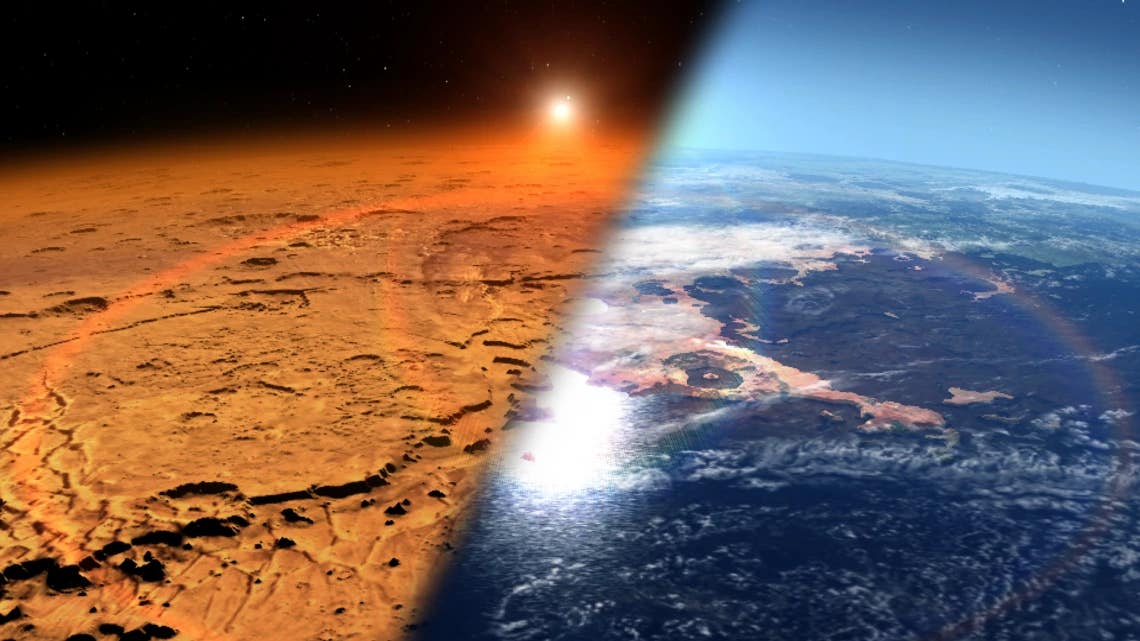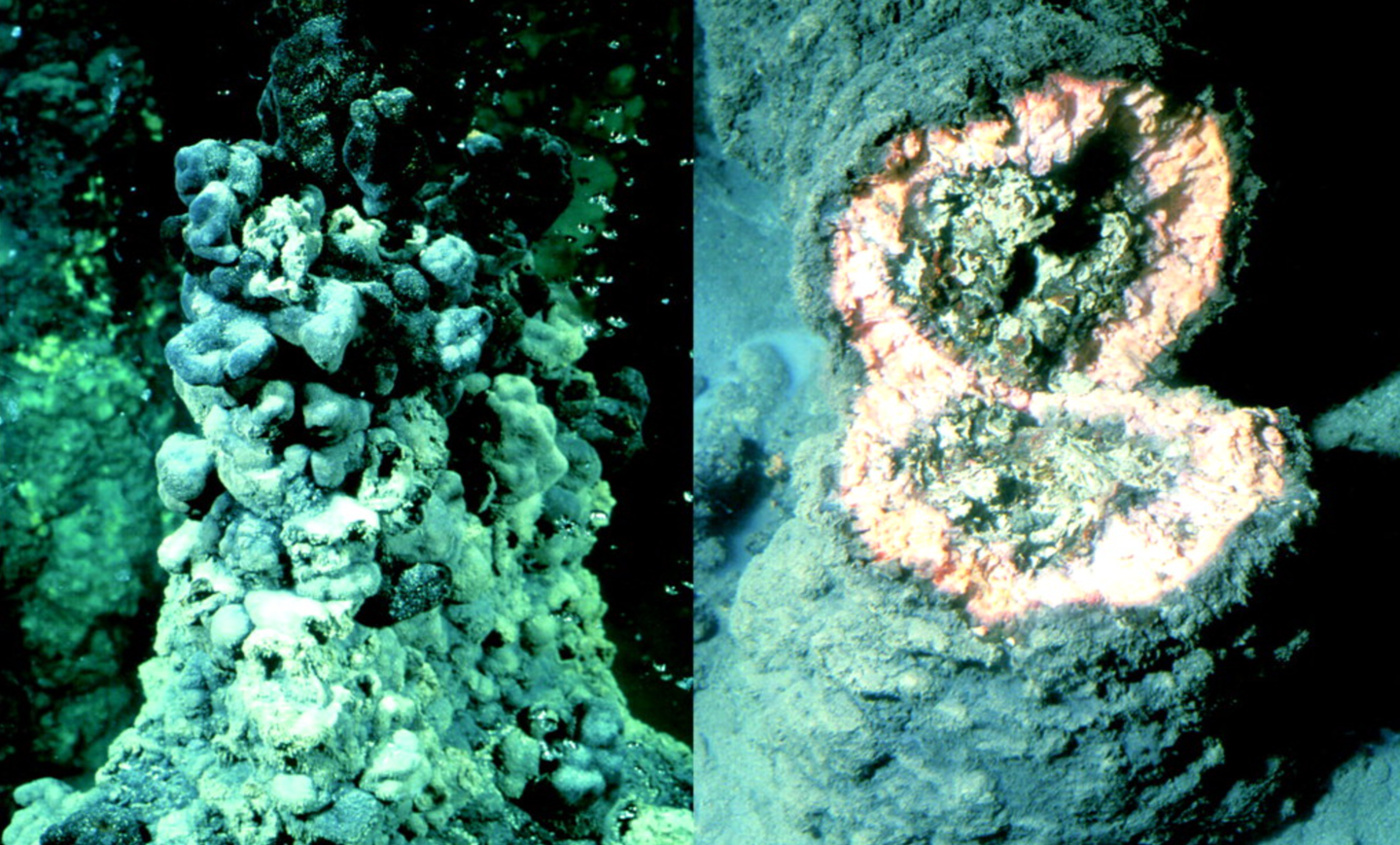Why Mars became a desert while Earth stayed alive
Both Mars and Earth began with similar ingredients—rocky surfaces, carbon, water, and sunlight—but their paths split dramatically.

Unlike Earth, Mars lacked volcanic activity to release carbon back into the air, leading to long dry spells. (CREDIT: CC BY-SA 4.0)
For decades, scientists have puzzled over why Earth stayed warm and alive while Mars turned cold and dry. Both planets began with similar ingredients—rocky surfaces, carbon, water, and sunlight—but their paths split dramatically.
A new study led by Edwin Kite from the University of Chicago offers a compelling explanation: Mars had brief wet periods sparked by the slowly brightening sun, but its own geology shut them down, pushing it back to desert.
Published in the journal Nature, the study builds on recent discoveries by NASA’s Curiosity rover, which found carbonate-rich rocks in Mars’ surface. These rocks reveal a hidden story of a planet that may have once supported water, but couldn't keep it for long.
Short Bursts of Warmth, Long Ages of Cold
On Mars, ancient riverbeds and lake basins carved into the surface show that liquid water once flowed freely. These wet periods came and went over billions of years. Kite and his team now believe that each warm spell began when the sun’s brightness slowly increased. That sunlight melted ice or snow, letting water run across the surface.
But here’s the catch: as water moved across Martian soil, it pulled carbon dioxide from the air and locked it into rock as carbonate. This reduced the greenhouse gases in the atmosphere, cooling the planet and ending the water flow.
The same process happens on Earth. Carbon is taken from the air, stored in rock, then released later through volcanic eruptions. This keeps the climate fairly stable. But Mars has been mostly volcanically quiet for a long time. With little to no volcanic outgassing, Mars had no way to bring back the carbon it lost.
Related Stories
- First direct evidence of how Mars lost its thick atmosphere and water
- NASA researchers discover what happened to Mars' water
- Scientists find significant amounts of water hidden beneath Mars' surface
"Our models suggest that periods of habitability on Mars have been the exception, rather than the rule," said Kite, who also works with the Curiosity team. “Mars generally self-regulates as a desert planet.”
A Carbon Sink Hidden in Plain Sight
The mystery of Mars’ missing carbon has long puzzled scientists. To support liquid water in the past, the planet must have once had a much thicker atmosphere. So where did all that carbon go?
For years, researchers searched for carbonate rocks that would show the gas had been trapped underground. Initial rover missions came up empty. But that changed when Curiosity started climbing Mount Sharp in Gale Crater. There, the rover drilled into rocks with high levels of hidden carbonates—some holding 5 to 11 percent by weight.
“People have been looking for a tomb for the atmosphere for years,” said Kite. These cryptic carbonates, not visible from orbit due to dust and mineral interference, now offer proof that carbon was buried deep within Martian rock.
Benjamin Tutolo, a study coauthor and professor at the University of Calgary, emphasized the value of having a rover on the ground. “The chemistry and mineralogy measurements they provide really are essential in our continuing quest to understand how and why planets stay habitable.”
Mars vs. Earth: A Delicate Balance
Earth’s climate has remained stable for more than 3.5 billion years. That balance depends on carbon cycling between the atmosphere and the planet’s crust. Volcanic eruptions push carbon out, while weathering and sedimentation draw it in. This feedback loop has helped maintain Earth’s mild climate.
Mars, however, appears to have its own version of this cycle, but with a built-in flaw. As the sun brightened over time—about 8 percent every billion years—brief periods of warmth triggered carbonate formation. But with little volcanic activity to return the carbon, each warming phase was short-lived.
The team’s models suggest that Mars experienced liquid water for only short spans, separated by gaps as long as 100 million years. These long dry spells would have made it nearly impossible for life to take hold or survive.
Tracing Mars' Climate with Rocks
The Curiosity rover has been exploring Gale Crater, one of Mars' thickest and most diverse sedimentary sites. So far, it has drilled five samples rich in carbonate, spanning nearly 200 meters of rock layers. Some of these rocks were even displaced from higher up the mountain, suggesting carbonate-rich zones may extend farther.
The researchers calculated that this carbonate formation likely pulled a significant amount of CO₂ from the air. Based on the extent and density of these sedimentary deposits, they estimate that the locked-away carbon could explain the planet’s thin atmosphere today.
Meanwhile, on the rim of Jezero Crater—where NASA’s Perseverance rover is active—similar carbonate-rich rocks have been found. These were likely formed along ancient lakeshores and may stretch for tens of kilometers.
This widespread presence supports the idea that Mars’ sedimentary rocks played a major role in its loss of habitability—not just recording the planet’s past but driving its climate toward a permanent freeze.
Mars' Patchy Oases and Chaotic Orbits
Kite's team used a detailed model to simulate how Mars’ climate changed over billions of years. The model included chaotic shifts in the planet’s orbit, carbonate formation, and carbon loss to space. Their results showed that warm phases were patchy, not global. Snowmelt or shallow groundwater might have fed small oases, but most of the planet stayed dry.
The records in Gale Crater suggest liquid water appeared intermittently, and sometimes surprisingly late—up to half a billion years ago. These brief episodes likely produced the carbonate rocks now found in Curiosity’s drill samples.
The model starts from 3.5 billion years ago and simulates the planet’s climate forward in time. It shows that every time conditions allowed water, they also enabled carbonate formation, which quickly shut down the greenhouse effect. The atmosphere would then shrink back to a thin, dry shell—too weak to hold liquid water.
A New Way to Understand Habitability
This new research reshapes how we view Mars’ past and raises questions about what makes planets habitable. Earth may seem lucky, but its long-term climate stability depends on a delicate carbon balance—one that Mars lost early in its history.
With ongoing missions like Curiosity and Perseverance, and data from orbiting spacecraft, scientists are piecing together a clearer story. Mars didn’t just lose its habitability by accident. It was wired to become a desert from the start.
Kite and his colleagues believe the current findings offer a testable model, not just a theory. Future missions can look for more carbonate deposits to confirm whether this self-limiting climate pattern holds across the planet.
For now, the story told by Mars’ rocks offers a sobering lesson: even when a planet starts off with the right ingredients, it might still end up lifeless if it can’t maintain the delicate balance that life needs.
Note: The article above provided above by The Brighter Side of News.
Like these kind of feel good stories? Get The Brighter Side of News' newsletter.



